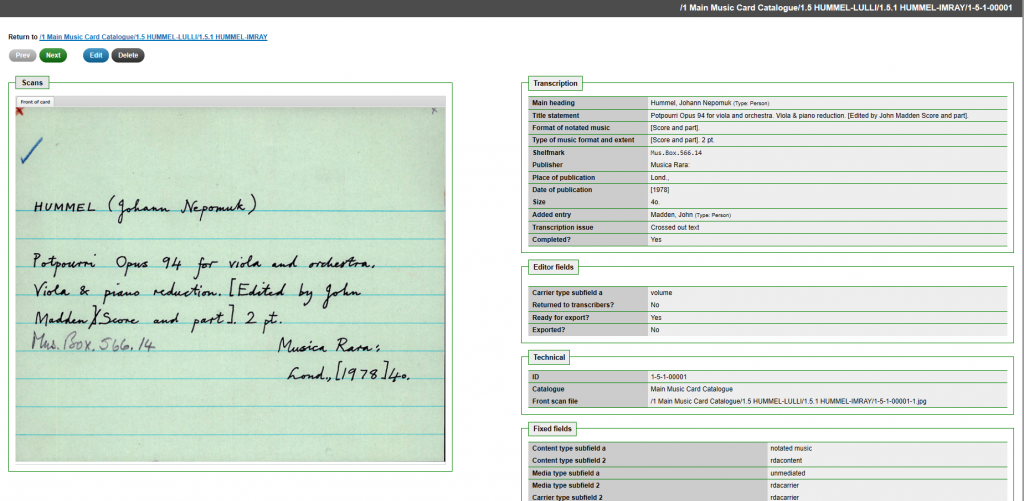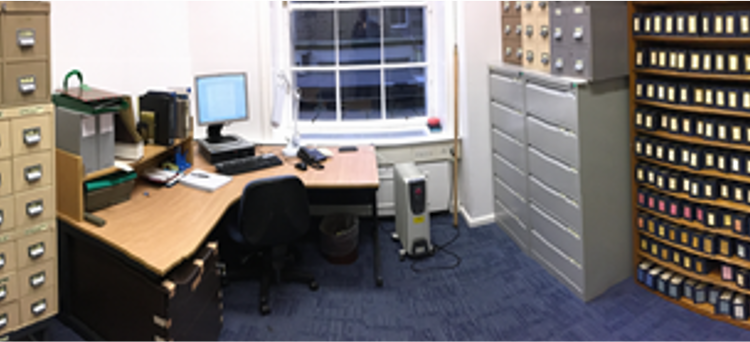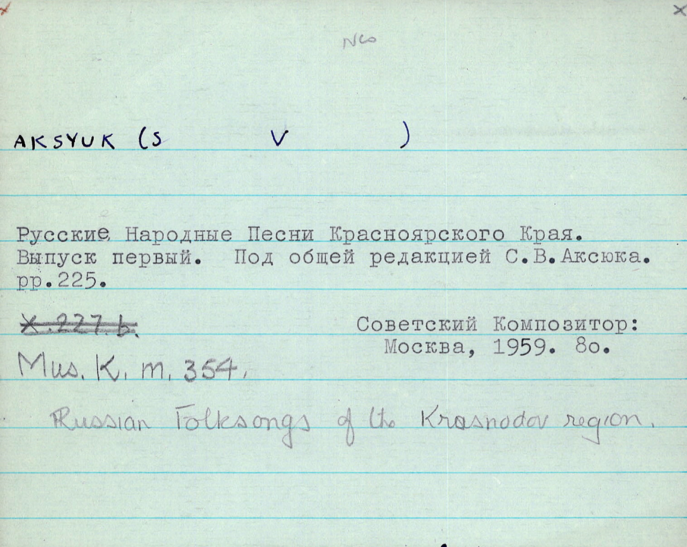The National Library is working on a project to transfer its music card catalogues to the library’s online catalogue. Up until now, to search for music materials, users had the option of physically searching the Main Music Card Catalogue in the reading rooms, or they could phone the library and the librarians would check through other card catalogues kept in the music offices. It was quite an arduous process (not very 21st century!) but now the library is happy to say that it is in the final stages of putting the music catalogues online so that members of the public will be able to search remotely to see what music the library has in its stacks. This will ensure it is quicker and easier for library users and librarians to find items they are looking for.

This project scanned all of the cards so that they could be displayed in a purpose-built database , a virtual card catalogue, called the MCCTA (Music Card Catalogue Transcription Application). The information on the cards was then typed up by an outsourced company in India that was selected following Scottish Government procurement regulations to ensure proper ethics were maintained, in particular relating to labour rights. The company selected also had experience with bibliographic projects like ours. Within the employ of the library itself, two music librarians, Alex Cuadrado and Kirsty Morgan, were hired for the project as Senior and Junior Editors, respectively. They quality-control the transcriptions and make changes based on library and music knowledge. The project is then overseen by the National Library’s in-house music librarian, Almut Boehme, who contributes to the reviewing process alongside all of her other library duties. While the scanning (phase one) was completed first, phases two and three (i.e. the outsourced transcribing and the in-house editing) are running concurrently. This means that the music librarians can update, refine and clarify the instructions for the transcription company as the project progresses.

In the 1980s and 90s, when these sorts of projects were taking off, libraries pulled existing records from union catalogues into their own catalogues, however this was an expensive process and libraries had more funding back then. In the late 90s into the 2000s, with less funding available, it became necessary for libraries to have their cards typed up into online systems.
The oldest catalogue records were written on cards during the Victorian era. These cards follow older cataloguing rules and have old-fashioned cursive handwriting – some of which needs to be tackled like a detective puzzle. You may have seen our twitter game back in May where we challenged our followers to decipher one of the Victorian cards.
More recent catalogue records are easier to read, and some were even typed onto the cards, but they still followed different standards as cataloguing rules changed: British Museum Cataloguing Rules, International Standard Bibliographic Description (ISBD), and Anglo-American Cataloguing Rules (AACR then AACR2). Today’s current cataloguing standard, called Resource Description and Access (RDA), was only released in 2010 and none of the cards converted follow this standard. Although some RDA standards have been used in the online catalogue, the project is not updating the information on the cards, so for now the online catalogue will contain records with all the different standards. Since the information on the cards is different across the catalogues, new instructions for transcribers on the project needed to be created for each standard. The editors also made decisions for how to tackle crossed out text, proofreading signs and different languages often with characters outside the Roman alphabet, such as Cyrillic or Old Celtic writing.
This is the first in a series of three articles about the Music Retroconversion Project at the National Library of Scotland. Please join us next week where we will discuss the different cards we’ve been converting and the challenges these have posed, and the following week where we’ll talk about the benefits this project will provide to the National Library and, most importantly, to our readers.


